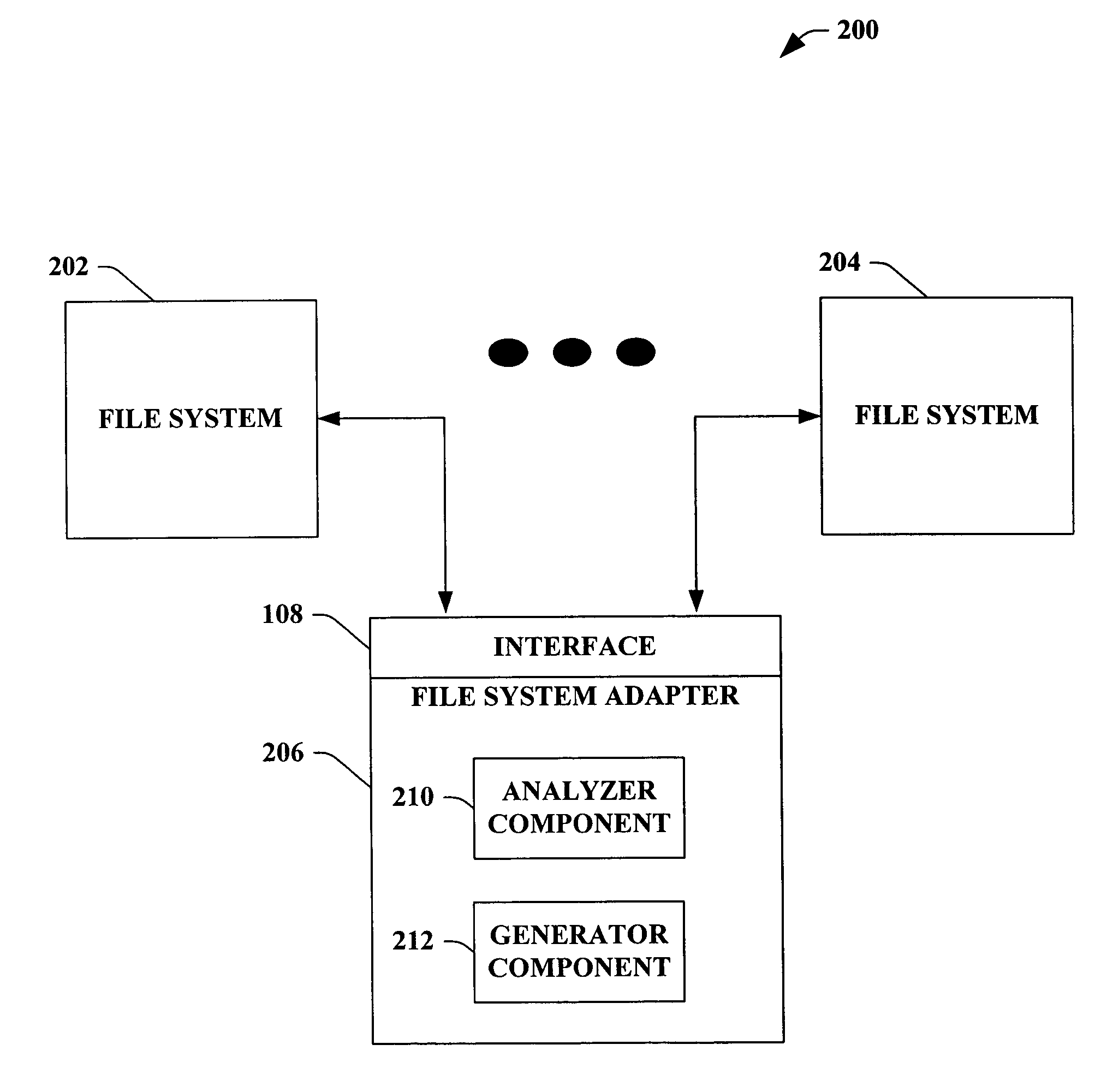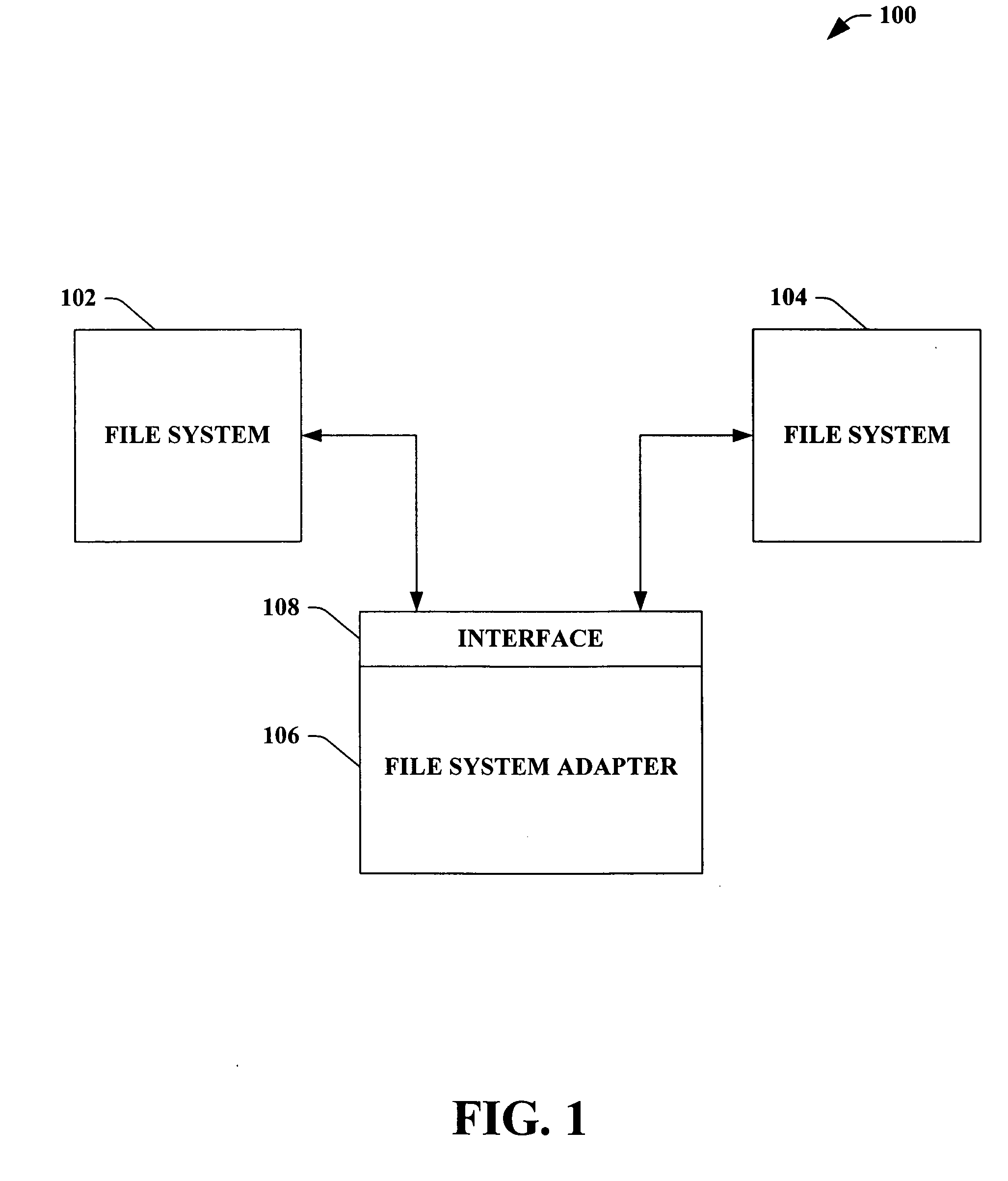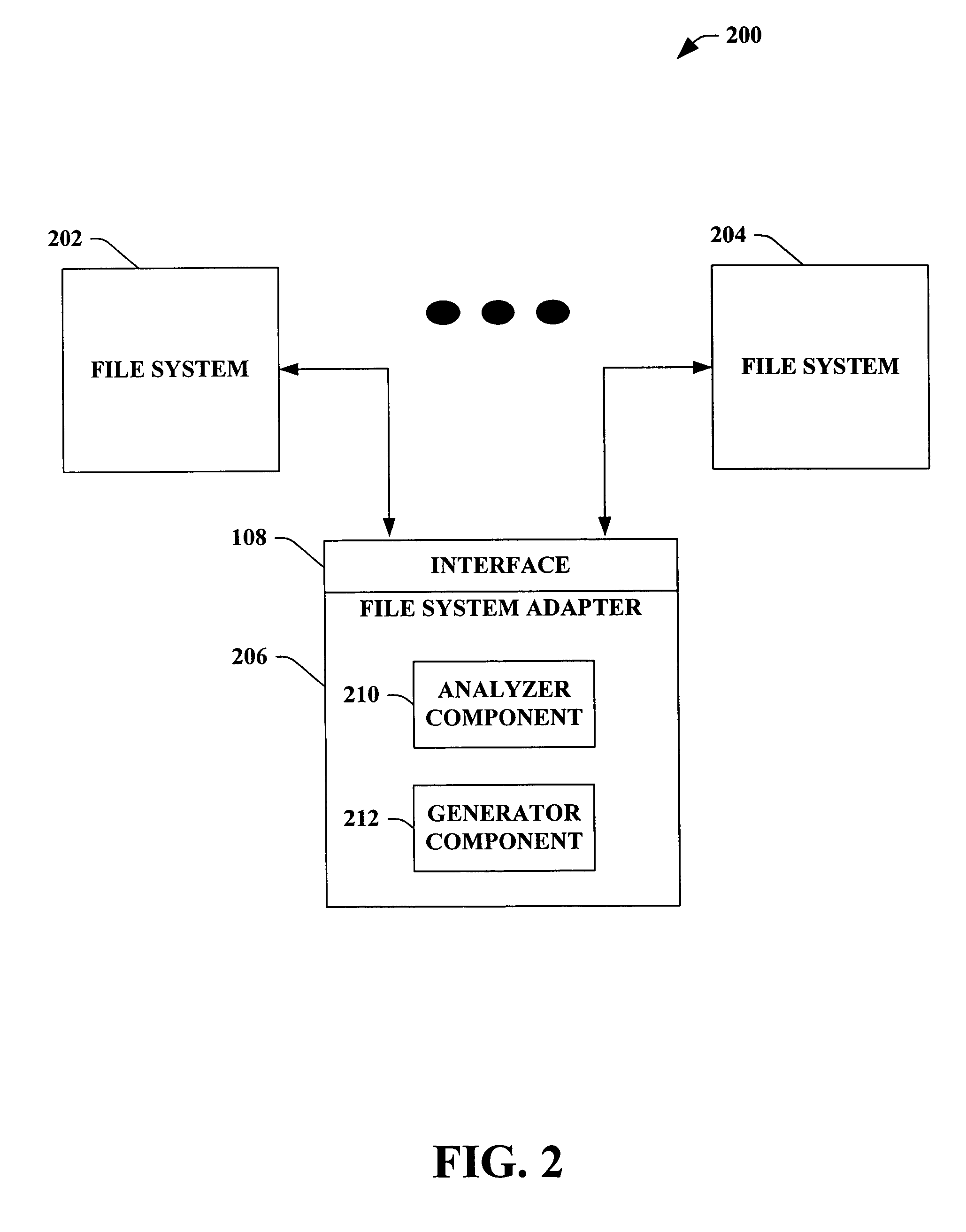File system represented inside a database
a file system and database technology, applied in the field of file system representation inside a database, can solve the problems of inability to adapt disparate file systems, inability to meet the needs of different types of users, and inability to provide the same information, etc., to achieve the effect of facilitating the adaptation of disparate file systems
- Summary
- Abstract
- Description
- Claims
- Application Information
AI Technical Summary
Benefits of technology
Problems solved by technology
Method used
Image
Examples
Embodiment Construction
[0027] As utilized in this application, terms “component,”“system,”“interface,” and the like are intended to refer to a computer-related entity, either hardware, software (e.g., in execution), and / or firmware. For example, a component can be a process running on a processor, a processor, an object, an executable, a program, and / or a computer. By way of illustration, both an application running on a server and the server can be a component. One or more components can reside within a process and a component can be localized on one computer and / or distributed between two or more computers.
[0028] The subject invention is described with reference to the drawings, wherein like reference numerals are used to refer to like elements throughout. In the following description, for purposes of explanation, numerous specific details are set forth in order to provide a thorough understanding of the subject invention. It may be evident, however, that the subject invention may be practiced without ...
PUM
 Login to View More
Login to View More Abstract
Description
Claims
Application Information
 Login to View More
Login to View More - R&D
- Intellectual Property
- Life Sciences
- Materials
- Tech Scout
- Unparalleled Data Quality
- Higher Quality Content
- 60% Fewer Hallucinations
Browse by: Latest US Patents, China's latest patents, Technical Efficacy Thesaurus, Application Domain, Technology Topic, Popular Technical Reports.
© 2025 PatSnap. All rights reserved.Legal|Privacy policy|Modern Slavery Act Transparency Statement|Sitemap|About US| Contact US: help@patsnap.com



